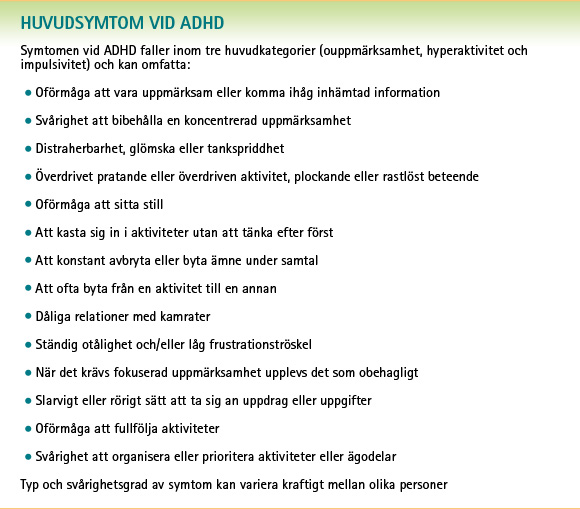
Attention Deficit Disorder (ADD) and one of its related disorders, AttentionDeficit Hyperactivity Disorder (ADHD), affect between 3%-7% of the population in the United States.
ADD is the most common behavioral problem for children and teens and is marked by an inability to focus or concentrate for extended periods. ADHD is marked by hyperactive and/or inappropriate behavior. There are more than three times the number of cases in boys than girls. Children with ADHD are at a higher risk of developing personality disorders and substance abuse problems.
The 2000 edition of the Diagnostic & Statistical Manual for Mental Disorders(DSM-IV-TR) provides the criteria for diagnosing ADD and ADHD. Six or more of the listed symptoms of inattention must be present for at least six months and be disruptive and inappropriate for the child’s developmental level in order to render a diagnosis of ADD or ADHD.
In 1998, a report published by the National Institutes of Health (NIH) spoke about the inability to find a cause or causes of ADD and ADHD. “After years of clinical research and experience with ADHD, our knowledge about the cause or causes of ADHD remains speculative. Consequently, we have no strategies for the prevention of ADHD.”
Experts can’t agree on the causes of ADD and ADHD. some postulate that it is the result of one or more conditions which include diet, allergies, low muscle tone, intolerance to some foods, anxiety, physical or mental illness, parenting deficiencies and poor discipline.
Some experts feel that ADD and ADHD can be caused by frequent childhood infections, such as ear infections. The ADD child can also have other disorders co-existing with attention deficit such as learning disabilities or mental disorders. often, ADD children do poorly in school due to their inability to concentrate and stay focused. as many as half of children with ADHD have co-existing mental disorders.
One of the coexisting disorders in patients with ADHD is Oppositional Defiant Disorder (ODD). Symptoms of ODD usually appear before age eight and may occur with people the child knows well such as family members or regular care providers. The behaviors associated with ODD include losing one’s temper, arguing with adults, refusing to comply with adults’ rules or requests, being resentful or vindictive, deliberately annoying others and blaming others for their mistakes.
A related disorder, known as Conduct Disorder (CD) is a behavioral problem characterized by aggression towards others and serious breaches of rules, laws and social norms. in many cases, this leads to stints in juvenile detention facilities. CD is less common than ODD but it is nonetheless a severe and serious disorder which is difficult to treat.
There are many symptoms present in an ADD/ADHD person. while energetic children do not always have ADD or ADHD, the symptoms described below are some of the Attention Deficit identifying markers. ADHD and ADD children also have a higher incidence of physical injuries than non-ADD/ADHD children.
Lack of concentration and frequently making mistakesInterrupting conversationsRapid speechInattentivenessPoor memoryAggressivenessRelationship problemsImpulsivityEasily distractedDepression and/or anxietyMood swingsOften does not seem to listen when spoken to directlySocial and behavioral problems
There are three types of attention deficit. The inattentive type is obviously a child who has trouble paying attention along with other factors such as being easily distracted.
The hyperactive-impulsive type is aggressive and compulsive. The hyperactive-impulsive child often squirms and fidgets frequently. The most common type of ADHD is a hybrid of attention-deficit/hyperactivity disorder.
Get More Information on Focus ADDult for Adults and Teens.